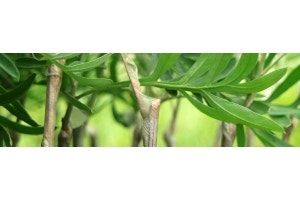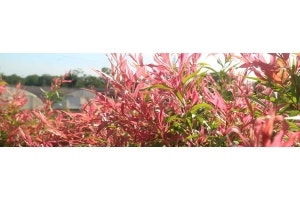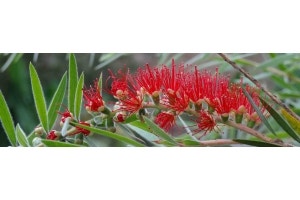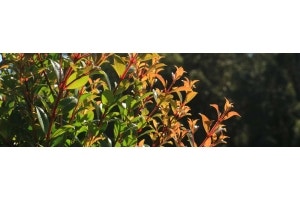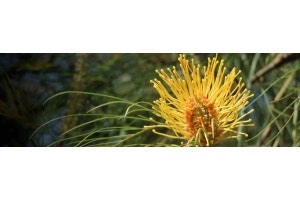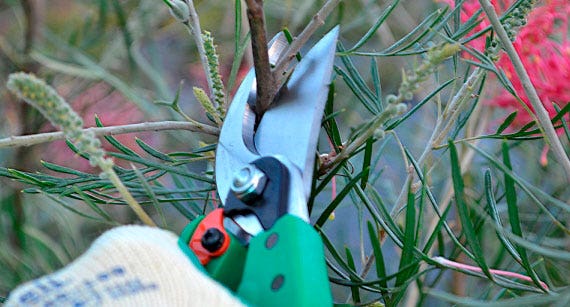
Why do we need to prune our shrubs and bushes?
Why can’t we just leave them to grow wild, as they do in nature?-
Well, plants are often pruned “in nature” –
- by the action of strong winds, reducing their energy
- by animals nibbling at tender young shoots
- by armies of insects that take away dead and dying wood
- and by fungus that feeds on sickly stems
This all helps change the appearance of plants. We want our garden plants to work hard and look their very best all year - without the help of huge beetle armies or herds of munching roos. Pruning helps achieve that.
Five Good Reasons to Prune

1. For a better shape
Some shrubs naturally grow straggly, or what gardeners call ‘leggy’ - long bald branches and a tuft of leaves right at the end.
Some grow lopsided or with an unbalanced shape. Pruning helps tidy up that shape, give it some structure and a more attractive proportioned silhouette.If you’re really keen on pruning, you can create ornamental shapes in topiary – balls, cones, spirals or even a full size elephant – by snipping and clipping small-leafed hedging plants to shape. Our topiary range of shrubs have small dense leaves ideal for this.
2. For denser growth
Shrubs can grow tall and twiggy, with a gappy centre, or random bald spots - which is not very useful if you are hoping for a smooth hedge or effective windbreak. Pruning can help plants grow thicker, more dense, more compact. It encourages side branches to develop, instead of just vertical stems.
3. For more flowers and fruit
Flowers and fruit often develop from the new growth points of a plant. The more a plant is pruned, the more growth points are encouraged, by redirecting hormones within the plant’s stem from the tips to other points along the stem. Fresh side shoots which grow this season, will develop into buds next season – which means more flowers or fruit for you!
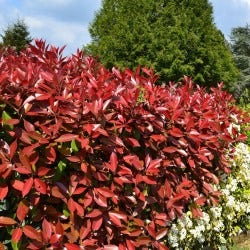
4. For leaf colour
Many native and exotic shrubs produce beautifully coloured new young leaves. Syzygium Winter Lights, Photinia Red Robin, Ixora Prince of Orange and Viburnum Emerald Lustre are particularly spectacular in new leaf. Prune your shrubs regularly, and you’ll enjoy more of this colour in your garden. Check out our Foliage Colour range of plants for more ideas.
5. For health and vigour
Shrubs can grow weak, or a branch can lose energy and die back. Pruning a shrub removes scrawny, skinny stems, redirecting energy to stems which are sturdy and thriving. It also cuts out any dead or sickly wood that could attract disease and fungal spores. This keeps the shrub healthy and strong.
Four Simple Steps to Pruning
Pruning looks complicated but is really straightforward once you follow the steps
Step 1. Take out dead or sickly wood.
Cut it back to fresh growing wood where you can – scrape back the outer layer with a nail and you’ll see the inner layer just inside the bark change from brown to green. If this isn’t possible – say you’re cutting off a side shoot - cut it back to leave about 3-5mm of dead wood as a ‘stump’.
Step 2. Take out weak stems.
Look for old stems that are thinner, less leafy and more spindly; or ones that bore few flowers. Old stems usually have darker firmer bark than new stems. Snip these out as you did the dead wood, to leave the healthiest, most vigorous stems to grow.
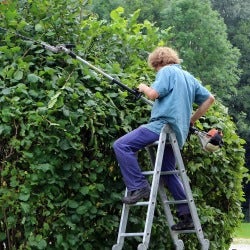
Step 3. Remove misaligned stems.
Cut out those branches that are crossing over and rubbing up against other healthy stems. The aim with most shrubs is to help the stems grow in an overall cup or nest shape – either with or without a trunk in the centre. Branches which grow across the cup, instead of up or around, block other branches from growing properly, hide the light from new shoots, and create an untidy shape.
Step 4. Neaten up the shape.
Step back and take a look at the shrub as a whole. Walk around it if you can, and get a view from different angles. Does it look reasonably symmetric? If not, cut back any branches which stick out, and give it a final clip to tidy up the silhouette.
Five Top Tips for Effective Pruning
1. Choose your tools
Always use bypass secateurs to cut living branches and stems. These are the ones that work like scissors, where the two blades cross over each other to make the cut. Anvil secateurs – where the top sharp blade comes to rest on the bottom flat blade – are best for dead wood only.
Make sure your tools are clean and sharp before use.
2. Choose your time
In the tropics and subtropics you can pretty much prune any time – in fact, you’ll probably need to, as plants grow more energetically in those warmer climates! In regions where frost or even snow occurs, it’s best to wait until just after the frosts have gone. Pruning encourages a plant to put out new shoots and a frost can kill these off. The exception would be plants like cherry and other ornamental trees which don’t respond well to being pruned when spring sap is rising. They thrive better when pruned in autumn as the sap is receding into the trunk.
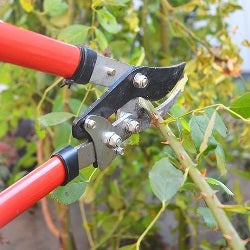
3. Cut to a shoot
When you cut back a stem, look for where a side shoot or new leaves are emerging and cut to just above that, leaving about 3-5mm as a buffer. The growth hormones in that stem will now divert from the (removed) tip to the side shoot, and grow on from that point. Note: if you are trimming a hedge, there’s no need to cut each stem individually like this. (Although in public show gardens, gardeners will sometimes clip a large-leafed hedge with trimmers to get the shape, and then neaten up with secateurs.)
4. Prune after flowering (usually)
If you have a flowering shrub that doesn’t produce fruit later in the year, or ornamental seedpods that you want to keep, then the best time to prune is usually right after flowering. That way, you don’t lose a whole season’s flowers, and the plant has a full year to produce new young flowering shoots for next time.
5. Hard or Tip Pruning?
Hard pruning – cutting out a lot of wood and reducing the plant’s size – encourages growth. Some cool-climate shrubs (buddleia and hydrangea especially) benefit from hard pruning which helps to produce lots of flowering stems and fresh green leafy growth. Reduce each stem back to around 1/3 of its original length, cutting to a side shoot where possible. If you don’t want your shrub to grow much bigger, or if it’s a naturally compact growing variety, just remove the dead, sickly and weak wood, and Tip Prune healthy branches to keep it in trim.







